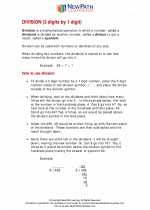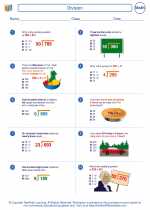Associative Property
The associative property is a mathematical property that states that the grouping of numbers in an operation does not change the result. In other words, when adding or multiplying three or more numbers, the result is the same regardless of how the numbers are grouped.
Addition
For addition, the associative property can be expressed as:
(a + b) + c = a + (b + c)
Multiplication
For multiplication, the associative property can be expressed as:
(a × b) × c = a × (b × c)
Study Guide
Here are some key points to remember about the associative property:
- It applies to addition and multiplication but not to subtraction or division.
- It allows us to regroup numbers without changing the result.
- The property can be used to simplify calculations by changing the grouping of numbers.
Practice using the associative property with the following examples:
Example 1
Apply the associative property to simplify the following addition:
(2 + 3) + 4 = 2 + (3 + 4)
The result is the same on both sides of the equation, showing that the associative property holds for addition.
Example 2
Apply the associative property to simplify the following multiplication:
(5 × 6) × 7 = 5 × (6 × 7)
Once again, the result is the same on both sides, demonstrating the associative property for multiplication.
Remember to apply the associative property when working with larger numbers or expressions to simplify calculations and make problem-solving easier.
[Associative Property] Related Worksheets and Study Guides:
.◂Math Worksheets and Study Guides Sixth Grade. Division

 Worksheet/Answer key
Worksheet/Answer key
 Worksheet/Answer key
Worksheet/Answer key
 Worksheet/Answer key
Worksheet/Answer key
